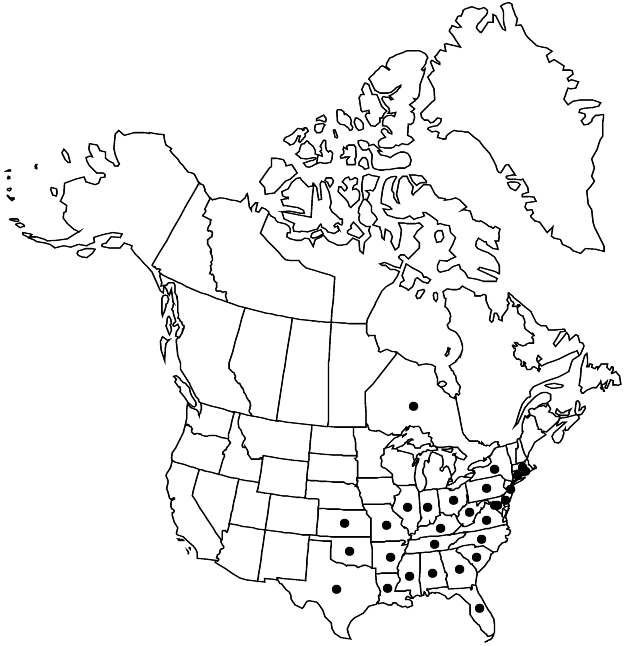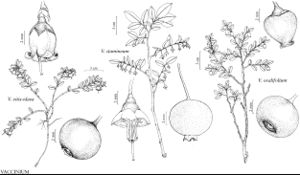Vaccinium stamineum
Sp. Pl. 1: 350. 1753 ,.
Plants frequently crown-forming, suckering when disturbed, forming small or extensive colonies; twigs of current season variously colored, most often green or glaucous, glabrous to densely hairy, sometimes pilose or glandular (not verrucose). Leaf-blades usually pale green or glaucous abaxially, green adaxially, elliptic, 20–80 × 9–32 mm, ± membranous, margins usually entire, inrolled on more-coriaceous blades, surfaces glabrous or densely hairy, rarely glandular. Inflorescences 2–7-flowered, sometimes flowers solitary. Pedicels subtended by leaflike bract (ca. as long as flower). Flowers: corolla lobes spreading at anthesis, white to greenish white, sometimes purple veined, 4–8 mm; filaments glabrous or hairy. Berries green, yellow-green, yellow, purple, or black, often lightly glaucous, 7–18 mm diam., sometimes hairy and sparsely glandular. 2n = 24.
Phenology: Flowering spring(-early summer).
Habitat: Sandy, well-drained soil, xeric communities such as dry oak woods, pine barrens, savannas, dry pine ridges, sparsely wooded bluffs, sand hills, thickets, clearings (usually on acidic substrates, sometimes on limestone)
Elevation: 0-1700 m
Distribution

Ont., Ala., Ark., Conn., Del., D.C., Fla., Ga., Ill., Ind., Kans., Ky., La., Md., Mass., Miss., Mo., N.J., N.Y., N.C., Ohio, Okla., Pa., R.I., S.C., Tenn., Tex., Va., W.Va., Mexico (Hidalgo), Mexico (Nuevo León), Mexico (Oaxaca), Mexico (San Luis Potosí)
Discussion
Vaccinium stamineum has been subject to an inordinate amount of splitting, especially by E. L. Greene and W. W. Ashe (see S. P. Vander Kloet 1988).
Selected References
None.
Lower Taxa
"entire" is not a number.
